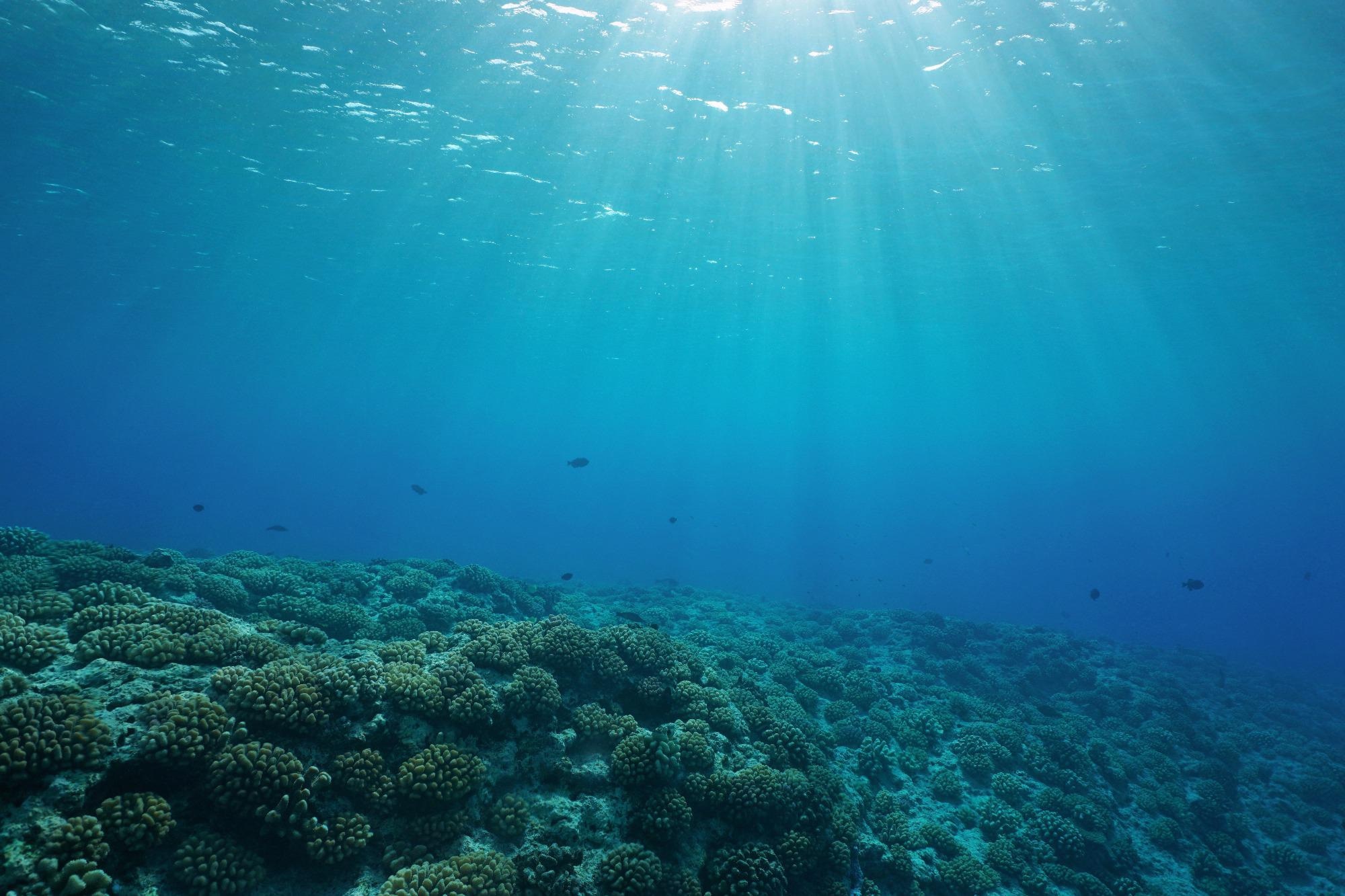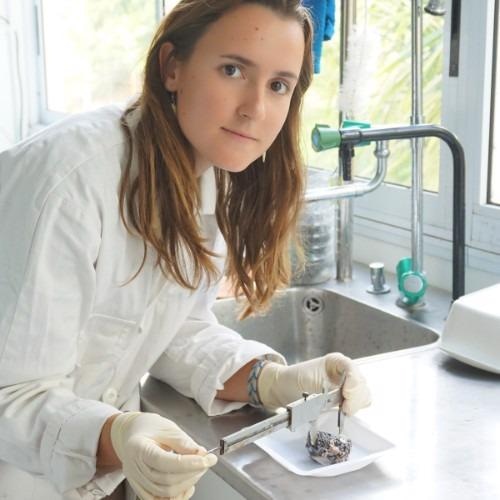Coral reefs host almost one third of all marine fish species, although they cover less than 1% of the ocean floor. They are strongly connected to many other ecosystems such as mangroves or seagrass meadows. Their extremely rich biodiversity provides income for millions of people worldwide, in terms of food supplies or touristic activities.
They are also amongst the most attractive natural ecosystems when considering marine recreational possibilities. They act as natural barriers against the wave activity on shorelines and can be good raw material sources for medical/engineering valorization through some of their inhabitants such as marine sponges, algae or corals. The loss of biodiversity and cover they have been facing for decades is an important issue that brings together many scientists and institutions around the world, hoping to find suitable monitoring and management perspectives.

Image Credit: Damsea/ Shutterstock.com
Can you explain why it is difficult for divers to gather information about coral reefs?
Scuba divers are unfortunately facing many different limitations in their work:
- They are unable to reach huge depths or diving times to cope with the safety procedures aimed at avoiding barotraumas.
- They cannot go diving too frequently as the excess nitrogen concentration within their body from each dive must be regularly evacuated.
- They must often avoid hazards like wrecks or caves that could be too dangerous to explore without proper training or suitable diving conditions.
- Diving equipment must be considered so as not to hinder divers' movements. They must remain in control of their movement underwater, especially if facing a problematic situation. Sometimes compromises need to be made, for example reducing devices' weight.
- They cannot be sent into harmful environments, either full of predators (such as sharks or marine crocodiles) or contaminated by toxic chemical substances.
Last but not least, humans have been, and still are, natural predators of many reef taxa that might, through time and evolution, become aware of a human-like underwater silhouette and thus react accordingly by adapting their behavior, i.e., escaping.
How can robots assist in this regard?
Underwater robots have faced great improvements in their conception over the last decades, as they are not limited by depth or time. They can perform repetitive tasks without tiredness. They are being equipped with powerful batteries and sensors, to enable them, in the near future, to cover large areas for long working periods to investigate, for instance, coral reef ecosystems. Being mounted with cameras, their work can be followed by a human operator controlling all parameters. Although research on the automatization of algorithms is widespread nowadays, it still targets the most expensive devices.
What are the specific qualities needed for a robot designed to investigate coral reefs?
Good performances in programming and autonomy, as well as a maximum of accuracy in the device’s deployment. To survey fish assemblages, robots need to be designed to operate close to the seafloor, have no cable and follow a precise trajectory of known coordinates while avoiding obstacles. Obviously, all of this becomes extremely challenging when occurring in complex environments with powerful currents.
Some of these robots are taking their inspiration from nature. Can you describe some of the most exciting designs you have encountered?
Many animals like fish, birds or insects inspire the design of autonomous devices, contributing to a whole research field known as “biomimetics”. Our study is not related to such investigations. Yet, we used a prototype aimed at being improved. Indeed, a second engine came to replace the first one, with distinct features including higher hydrodynamism due to a more profiled shape (i.e. less high, more elongated).
Just as in marine animals, some robots can be conceived so as to protrude a minimum from the core structure. I've been looking into some examples of projects of animal-shaped robots on the BBC website and Boston Engineering.
Can you explain what your recent study, ‘Underwater robots provide similar fish biodiversity assessments as divers on coral reefs’ aimed to uncover?
Through this study, we wanted to assess the relevance of using a Semi-Autonomous Underwater Vehicle (SAUV) in the monitoring of reef fish assemblages. We compared its observations to those of a commonly used protocol known as Underwater Visual Censuses (UVCs) and featuring human scuba divers. We wanted to know if the two approaches could be comparable in terms of a fish census to validate the robotic method.

How did you go about pitting underwater robots against more traditional diver-operated systems?
The same work on fish counts had to be performed by both the robot and the divers, which consisted of four 50 m transects per site investigated on the fringing reef of the island of Mayotte. Divers and robots were both recording fish in the same area using the same camera system at 20 minute intervals. This was replicated 13 times to cover all different sites.
How do these machines perform against human manned equivalents?
No differences in terms of fish density (i.e., the number of individuals observed for a particular species) were found between both methods, meaning that the use of a SAUV would be a suitable alternative to UVCs in our study case. Scuba divers recorded, on average, a few more species than SAUV. Still, videos from the robot counted larger specimens of fish species that are usually targeted by humans as fisheries (i.e., trevally, unicornfish, grouper).
We inferred that this fact could be due to the SAUV being an unknown silhouette for reef fish communities. As the robot emits quite a noisy sound while working, we were afraid that it would contribute to fish wariness towards it, but our observations in the field, fortunately, revealed a minimal disturbance in this sense.
How did autonomous robots perform compared to surface-operated alternatives, and which of these platforms do you believe shows the most promise for the future?
Using a surface-operated low-cost ROV, we found out that it is very difficult, or even impossible in some cases, to follow a standard and precise trajectory that would have been defined in advance. The automatic features we are developing will make such work possible on a routine basis.
Indeed, even with our automated trajectories, the biggest problem we encountered was the cable linking our SAUV to the boat sometimes got stuck in the coral, requiring human freediving interventions. With autonomous robots without a cable, such problems will be avoided.
How did you personally first become interested in this area of research?
As an engineer in environmental sciences, I am interested in applied research and technique improvements towards a particular need. I had no experience with marine robots before this survey. I enjoyed the time and energy spent collectively thinking of possible solutions to problems that arose throughout the study.
I participated in different meetings during which future improvements of the robot’s conception were discussed in order to better cope with the environmental context we were facing. Following this work, I regularly informed myself about advances in underwater robotics, which today seem to reach almost limitless prospects (i.e. mapping the ocean’s floor, monitoring water pollution, etc.).
What is next for the testing/development of underwater robots?
Today, studies instead aim at developing Autonomous Underwater Vehicles (AUVs), which, in comparison to SAUVs, do not require any operator intervention during their tasks. They are programmed to return to a particular location once the mission is finished to gather and process data. Also, great improvements have been made in the automatic recognition of species or objects by the robot itself through machine learning.
Regarding technical improvements, I believe a great challenge for the future of robotics is developing the “delicacy” of the devices, which remains one of the main differences between robots and humans. When the collection of fragile samples is required, this is something to work on as it is still very hard to recreate the dexterity and precision of a human hand and fingers compared to an articulated arm. Also, I am confident that future robots should rely on a more sustainable power supply for their batteries and autonomy, such as using wave energy.
Will you be involved in these future projects and if so, how?
I would be very glad to! I am currently involved in another kind of study in French Polynesia targeting the aquaculture of marine sponges towards their chemical exploitation by the pharmaceutical industry. As exhaustive surveys of sponge abundance are lacking, due to the limitations I have mentioned, we are currently looking for such robotic tools to assess wild sponge cover on the barrier reef of some atolls of the Tuamotu Archipelago, where natural populations occur. It might be an interesting application for robot-designers or operators and a new way of starting a collaboration with different institutions specialized in marine robotics.
Where can readers find more information?
Readers can find more information and regular updates of the ongoing BUBOT project, with details of the campaign that was held in Mayotte in 2017, here.
Also available is a short movie that was made to communicate about this same research campaign.
Robot pour le comptage de poissons - Mayotte 2017
About Mathilde Maslin
 Mathilde is a research engineer in environmental sciences, specialized very early in marine biology and ecology. Mathilde has always been passionate about marine fauna and flora since her first scuba dive in the Red Sea, aged 10. The aim of Mathilde’s work is for a better assessment of marine resources and their sustainable use for and by humankind, an area which is referred to as “conservation biology”.
Mathilde is a research engineer in environmental sciences, specialized very early in marine biology and ecology. Mathilde has always been passionate about marine fauna and flora since her first scuba dive in the Red Sea, aged 10. The aim of Mathilde’s work is for a better assessment of marine resources and their sustainable use for and by humankind, an area which is referred to as “conservation biology”.
Mathilde has been interested in research since her stay at the University of Malta, during which she discovered an alien species from the Mediterranean Sea and contributed to its description (see Vella et al., 2016). The last internship Mathilde worked on to obtain her degree was in Mayotte (Indian Ocean), at the Centre Universitaire de Formation et de Recheche, to work on marine tools such as Remote Operated Vehicles to operate tropical fish counts instead of human divers.
Once graduated, Mathilde spent a year at the Institut de la Mer in Villefranche/Mer (South of France) working on marine algae as a potential substrate for harmful algal blooms of toxic benthic dinoflagellates. Mathilde is currently working on a Ph.D. in Tahiti, French Polynesia, in a project that targets native marine sponge species as suitable candidates for mariculture in the perspective of chemical valorization.
Interview questions provided by Robert Lea.
Disclaimer: The views expressed here are those of the interviewee and do not necessarily represent the views of AZoM.com Limited (T/A) AZoNetwork, the owner and operator of this website. This disclaimer forms part of the Terms and Conditions of use of this website.